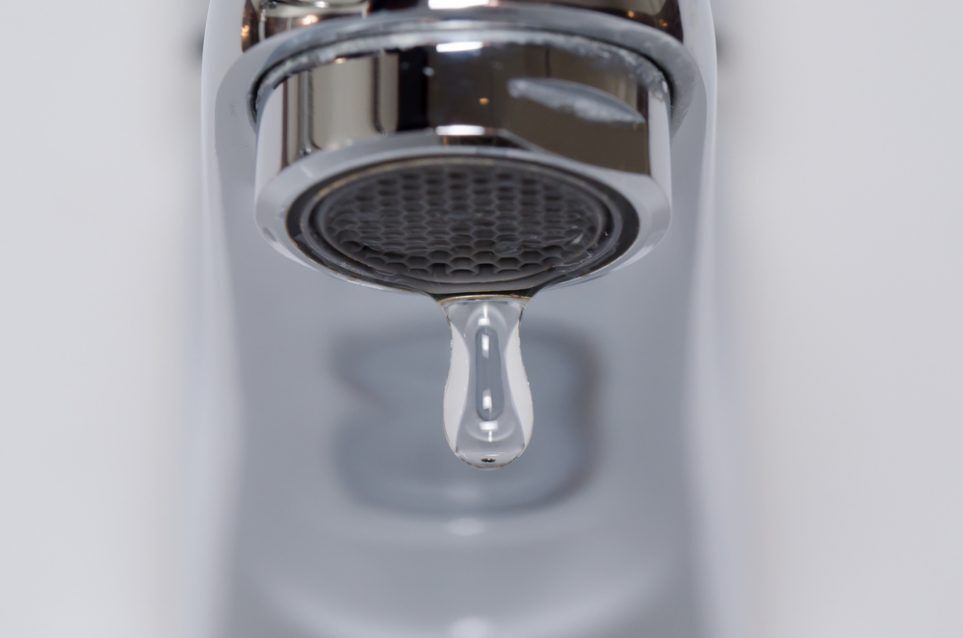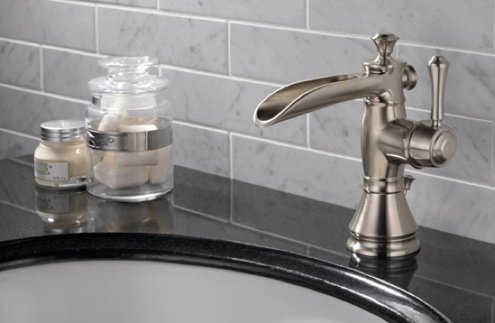Exploring the Significance of Repairing a Broken Faucet
Exploring the Significance of Repairing a Broken Faucet
Blog Article
Presented here in the next paragraphs you can locate lots of great ideas relating to 4 Common Reasons for a Leaky Faucet.

Trickling taps may feel like a minor trouble, yet their impact goes beyond simply the inconvenience of the noise. From drainage to sustaining unnecessary financial costs and wellness dangers, overlooking a leaking tap can result in numerous effects. In this short article, we'll explore why it's vital to address this common household issue immediately and efficiently.
Wastage of Water
Environmental Influence
Leaking faucets add considerably to water wastefulness. According to the Environmental Protection Agency (EPA), a single tap trickling at one drip per second can squander greater than 3,000 gallons of water per year. This not just stress water sources yet also impacts ecosystems and wildlife based on them.
Financial Expenses
Boosted Water Expenses
Past the ecological effect, leaking taps can pump up water expenses significantly. The collected waste gradually equates into greater utility expenses, which could have been stayed clear of with prompt repair services.
Prospective Building Damages
Furthermore, prolonged dripping can bring about damage to fixtures and surface areas surrounding the tap. Water accumulation can create staining, deterioration, and even architectural concerns if left unattended, leading to added fixing prices.
Wellness Concerns
Mold And Mildew and Mold Development
The consistent visibility of dampness from a dripping tap develops an excellent setting for mold and mildew and mildew growth. These fungi not just jeopardize indoor air quality yet additionally posture wellness dangers, particularly for people with breathing conditions or allergic reactions.
Waterborne Illness
Stagnant water in trickling faucets can become a breeding place for bacteria and other microorganisms, increasing the threat of waterborne illness. Impurities such as Legionella germs grow in stagnant water, possibly leading to severe diseases when consumed or breathed in.
Do it yourself vs. Specialist Repair work
Pros and Cons of DIY Fixing
While some may attempt to take care of a trickling tap themselves, DIY repair work include their very own set of challenges. Without correct knowledge and tools, DIY efforts can worsen the concern or lead to incomplete repairs, lengthening the issue.
Benefits of Employing an Expert Plumber
Hiring an expert plumber guarantees that the underlying source of the trickling tap is addressed properly. Plumbing technicians possess the competence and tools to identify and repair faucet concerns effectively, saving time and minimizing the risk of additional damages.
Step-by-Step Guide to Taking Care Of a Dripping Faucet
Devices Called for
Before attempting to repair a dripping faucet, collect the essential devices, consisting of an adjustable wrench, screwdrivers, substitute parts (such as washing machines or cartridges), and plumber's tape.
Typical Tap Issues and Their Solutions
Identify the kind of faucet and the details issue causing the drip. Common troubles consist of damaged washing machines, rusty valve seats, or faulty O-rings. Describe maker instructions or on-line tutorials for step-by-step guidance on fixings.
Preventive Measures
Regular Upkeep Tips
To prevent leaking taps, carry out regular maintenance such as cleaning up aerators, inspecting for leakages, and changing worn-out components promptly. Furthermore, take into consideration installing water-saving gadgets or updating to a lot more reliable fixtures.
Significance of Prompt Services
Addressing leaking faucets as quickly as they're seen prevents more water waste and potential damages, inevitably saving both water and money in the long run.
Influence On Residential Or Commercial Property Worth
Understanding of Well-Maintained Residential Or Commercial Property
Keeping a property in good condition, consisting of resolving maintenance concerns like dripping taps, boosts its viewed worth and desirability amongst possible buyers or occupants.
Impact on Resale Value
Features with well-maintained plumbing fixtures, consisting of faucets, command higher resale worths in the property market. Addressing dripping faucets can add to a favorable impact throughout residential or commercial property assessments and arrangements.
Ecological Duty
Specific Payment to Preservation
Taking duty for dealing with trickling taps straightens with wider initiatives toward water conservation and environmental sustainability. Every person's activities jointly make a considerable impact on preserving valuable resources.
Sustainable Living Practices
By focusing on timely repair work and adopting water-saving behaviors, individuals contribute to lasting living practices that profit both existing and future generations.
Conclusion
Resolving a leaking tap goes beyond plain benefit; it's an essential action towards saving water, lowering monetary prices, and protecting wellness and home. Whether via DIY repair services or specialist support, doing something about it to take care of trickling faucets is a small yet impactful method to advertise liable stewardship of resources and contribute to a healthier, a lot more lasting future.
How to Fix a Dripping or Leaky Faucet
A leaking faucet is one of the most common problems that homeowners encounter, but it being commonplace doesn’t make it any less annoying. The constant drip drip drip of a leaking bathtub faucet, showerhead, or sink tap can disturb your home’s serenity. Left neglected, a dripping faucet can also result in higher water bills and discoloration or mold growth in your sink or plumbing fixtures.
Fortunately, you don’t have to be a trained plumber to know how to stop a dripping faucet. With some basic tools, replacement parts, and a little patience, leaky faucet repair is a breeze. In this article, we’ll explain what causes dripping faucets and how you can fix them.
What Causes a Leaking Faucet?
Kitchen and bathroom faucets come in all manner of designs, but most involve some combination of valves, O-rings, seals, and washers. The O-ring is usually the weakest link, but any one of these pieces can wear down over time. Heat, moisture, temperature fluctuations, minerals, mold, and movement can contribute to warping and corrosion, breaking the watertight seal. This just comes with the territory of being a homeowner. Everything is always subject to wear and tear, and some component parts of your appliances and fixtures need to be replaced on occasion. At least replacement O-rings are cheap!
More rarely, dripping faucets can be a symptom of excessively high water pressure. Were this the case in your home, you would probably notice that the leak is not isolated to one faucet. Water pressure issues are harder to resolve on your own. We recommend contacting a professional plumber if you suspect your water pressure is too high.
How to Fix a Dripping Faucet
Pipe wrench or monkey wrench Allen wrench set Screwdrivers Old towel or rag Shut off the water.
Before you do anything, you need to turn off the water to keep from drenching your kitchen or bathroom. You should find a valve under the sink and against the wall. Once you’ve turned this valve, try turning the faucet on to confirm that the water source has been cut off.
If you can’t locate your local valve for the faucet you’re working on, you can always shut off the water to the house at the main valve. Of course, this will prohibit anyone from using the sinks, showers, or toilets while you’re working on the faucet that’s giving you trouble.
Plug or block the drain.
You’ll be disassembling the faucet and removing some small bits of hardware. Plug the drain with a stopper or rag to avoid the possibility of a small screw falling into your P-trap.
Take apart the faucet assembly.
There are several varieties of kitchen and bathroom faucets, each with its own manner of assembly. For detailed instructions on how to disassemble your faucet, you can refer to the fixture’s manual or contact the manufacturer. If you know whether you have a ball, disc, cartridge, or compression faucet, you can find detailed schematics online.
In general, you need to begin by removing the faucet handles. You might notice a small screw that you’ll need to remove with a screwdriver or Allen wrench. If you don’t see any visible securing hardware, it’s likely hidden under a decorative cap that can be unscrewed or popped off with flathead screwdriver.
Remove each piece methodically, consulting a schematic when necessary. Take notes or arrange the pieces in such a way to make it easier to correctly reassemble the faucet later.
Remove the cartridge.
Once you’ve removed the handles and securing hardware, you should be able to remove the valve cartridge or stem. Some cartridges will slide right out. Other faucet models will require you to loosen a nut with a pipe wrench before you can remove the valve stem.
Examine the exposed hardware.
With the cartridge or stem removed, inspect the component parts. Check the rubber O-rings for wear and tear. Also examine the seat washer for corrosion or other damage. These pieces are usually the responsible parties for a dripping faucet, but it’s worth inspecting the other component parts while you have the faucet disassembled.
Find replacement parts.
Once you’ve identified which faucet component has failed, find an identical replacement. Your local hardware store should have O-rings, seat washers, and other standard components in stock. If you have a luxury or uncommon faucet, you may have to contact the manufacturer for a replacement part.
It’s a good idea to take your old parts with you to the hardware store so you can compare them with the store’s inventory and be sure you’re purchasing the correct replacement.
Reassemble the faucet.
With your new parts in hand, reconstruct the faucet and handles. Don’t be tempted to overtighten screws or nuts. You might think this could create a better seal, but it can instead damage or bend a delicate part of the assembly and create a new problem for you.
Turn on the water and test the faucet.
The only thing left to do is test your work. Unplug the sink, turn the water back on, and try the faucet. Congratulate yourself on a job well done!
https://www.libertyhomeguard.com/how-to-fix-a-dripping-or-leaky-faucet/

I found that write up on while doing a search on the web. Are you aware of another person who is truly interested in Leaky Faucets: Why They Happen & What to Do About Them? Why not share it. We treasure reading our article about Why Are My Faucets Dripping (And Can I Fix It Myself)?.
Report this page